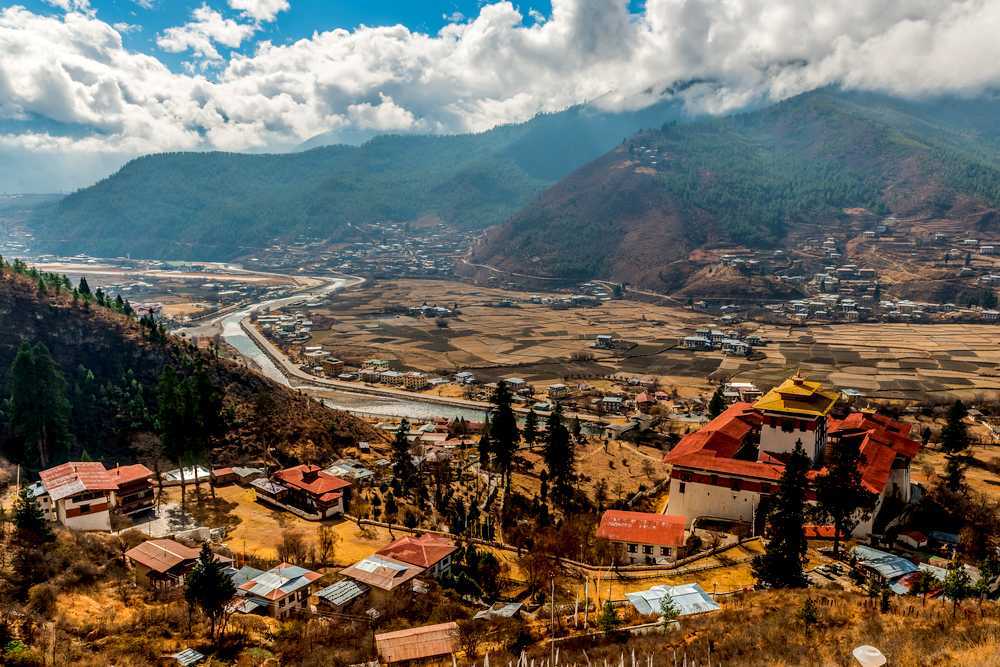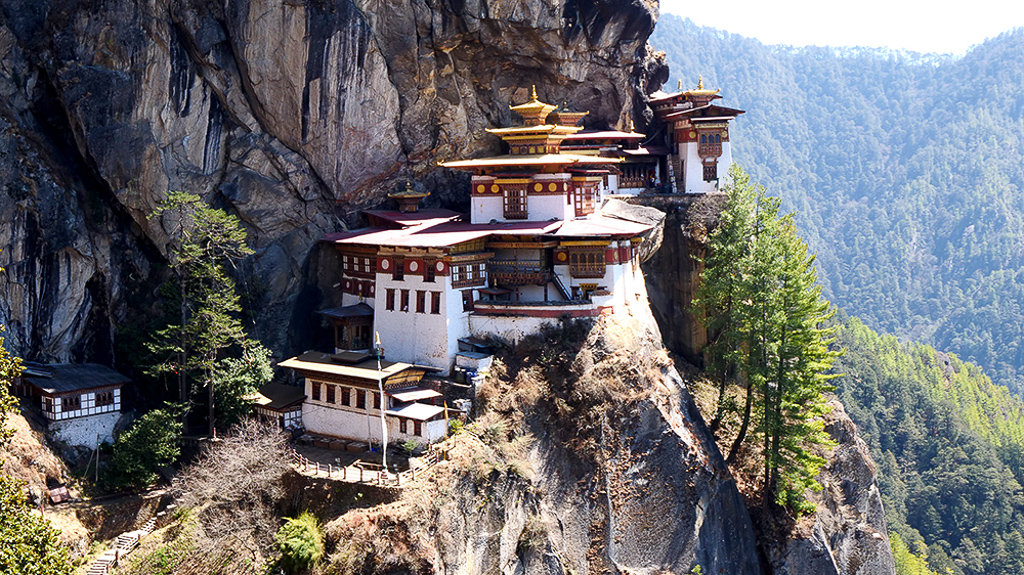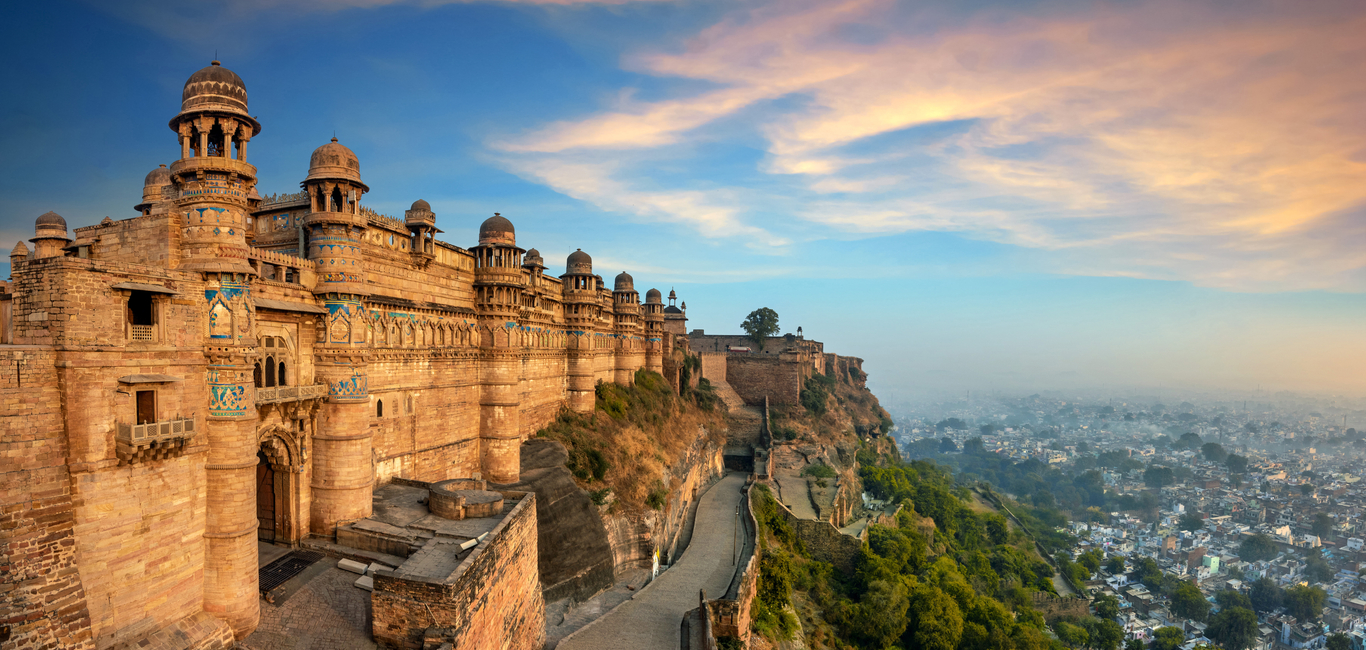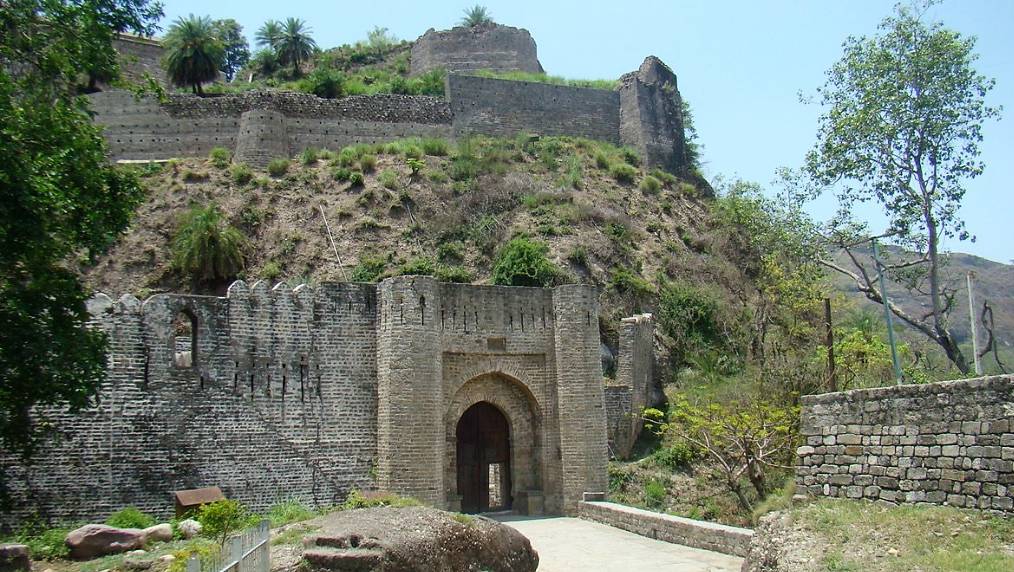
Situated in the lap of the gorgeous Paro valley in Bhutan, Paro is a quaint little town that inherits its name from the canyon itself. Vast expanses of paddy fields, magnificent vistas of Mt. Jhomolhari, and the gorgeous river, Pa Chu, meandering by, no wonder it is a scenic paradise. What adds to the charm of the town’s captivating beauty is its tranquil vibe that lures countless tourists from across the globe to have a peaceful time away from the chaos of mundane lives.
Often called the heart of Bhutan, Paro is also recognized as one of the country’s most important historical and cultural centers, home to ancient buildings, temples, and dzongs. Some of the must-visit places in Paro are the “Rinpung Dzong,” “Kyichu Lhakhang,” and “Drugyel Dzong.” Those hungry for an insight into Bhutan’s culture and heritage must make their way to “Ta Dzong,” or the “National Museum of Bhutan.”
Perched over the Rinpung Dzong, the museum is a treasure house of antique Buddhist thangka paintings, bronze artifacts, old traditional costumes, and antique armaments. A sightseeing excursion in Paro is not complete without visiting the world-famous “Taktsang Monastery” or the “Tiger’s Nest.” Perched on a rocky cliff and decked with fascinating architecture, no wonder it finds a place in every traveler’s list of “things to do” and “must-see attractions” while in Bhutan. Though the monastery is best visited on a hiking expedition through well-maintained trails, if you are weak on the fitness front, a pony ride is best suited for your sorts.
Paro is also a hub for adventure seekers in Bhutan. From mountain biking and cycling to river rafting and kayaking, the place offers everything to get your adrenaline rushing. For those who love trekking, there are ample hidden routes across the valley to explore. Amongst all, the “Mount Jhomolhari Trek” happens to be the most popular and often finds its mention on the list of passionate trekkers.
Your holidays in Paro are often considered incomplete if you haven’t indulged in the local shopping experience. The colorful “Paro Weekend Market” is a popular tourist attraction and leaves travelers with a splendid time shopping keepsake, traditional Bhutanese dresses, Bhutanese stamps, and prayer wheels. Gastronomes would also find an ample amount of dried yak cheese and organic honey to carry back home.
Best Time to Visit Paro
Weather-wise, the best time to visit Paro is the spring season, i.e., from March to May. Paro experiences a variety of seasons in a year. March sees the start of the spring season that lasts until mid-April. May marks the beginning of the summer with occasional showers that continue till mid-June, while the heavy downpours of summers last till late September. The Autumn months of October and November are followed by chilly winter months.
Summer Weather
June to August is the time when Paro experiences the summer season. The start of summer sees heavy rains, and the mountains remain cloaked with clouds and offer fascinating vistas. The maximum temperature in summer reaches around 28 degrees Celsius, while the minimum temperature is around 15 degrees Celsius. It is the wettest time of the year in the city.
Spring Weather
The Spring season in Paro runs from March to May, and it is the perfect time to visit the city. Tourists can enjoy the town’s natural beauty during this season, as the flowers are in full bloom. The region teems with abundant bird life in spring, making this season apt to visit for bird watchers. Nature buffs can enjoy the breathtaking views of imposing peaks. Travelers can also enjoy the vibrant festival of Paro Tsechu. The season can be pretty cold, so it is advisable to take woolen clothes.
Winter Weather
December to February is the time when Paro experiences winters. It is a great time to explore the city as it is free from the throngs of visitors, and the serenity can be felt all around. Accommodations are also available at a reasonable price during winters. The day is bright while nights and evenings can be freezing, so you should make sure that you are carrying thick woolens along. This is an ideal time for adventure activities such as white-water rafting and bird watching. The maximum temperature in winters goes up to around 9 degrees Celsius, and the minimum temperature dips down to -10 degrees Celsius.

How To Reach Paro?
Dotted with beautiful valleys and covered under a green blanket, Paro is one of the most scenic places in Bhutan. Adorned with history stories, the city has many traditions and cultures. Owing to its location in Bhutan, traveling to this place may seem complicated, but it’s not. Paro has pretty good connectivity both via air and toad.
By Air
The only international airport in Bhutan is located in the vicinity of Paro. Not only this but, this airport is also one of the world’s most challenging airports due to the high mountain peaks that surround the runway. Only a few certified and highly experienced pilots can operate flights from this airport. The airport has good connectivity with metropolitan cities in India. Airports like Indira Gandhi International Airport in Delhi, Bodhgaya Airport in Gaya, Netaji Subhash Chandra Bose International Airport in Kolkata, Lokpriya Gopinath Bordoloi International Airport in Guwahati and Bagdogra Airport in Siliguri have connected as well as direct flights to Paro. Also, one can quickly fly to Paro via Druk Airlines from places like Singapore, Kathmandu, Dhaka, and Bangkok.
By Road
For those who love road trips, reaching Paro by road is easiest done from Kolkata, West Bengal. The city is the nearest Indian city to the land of the dragon has regular bus services to Thimphu in Bhutan. The Royal Bhutanese Government provides the bus service, and one can catch these buses from Kolkata’s Esplanade Station. It takes around 18 hours to reach Thimphu, followed by which one can take a local bus or cab to Paro. From here to Paro, it is a 1.5 hours journey. Another option to travel to Paro via road is to drive for almost 17 hours ( 713 km) from Kolkata to Jaigaon, located in West Bengal’s Alipurduar district. On reaching Jaigaon reach Paro via Phuentsholing, which is 4 hours’ drive (143 km) from Paro.
Visit MakeMyTrip for bookings. Also, have a look at our various monthly issues.



